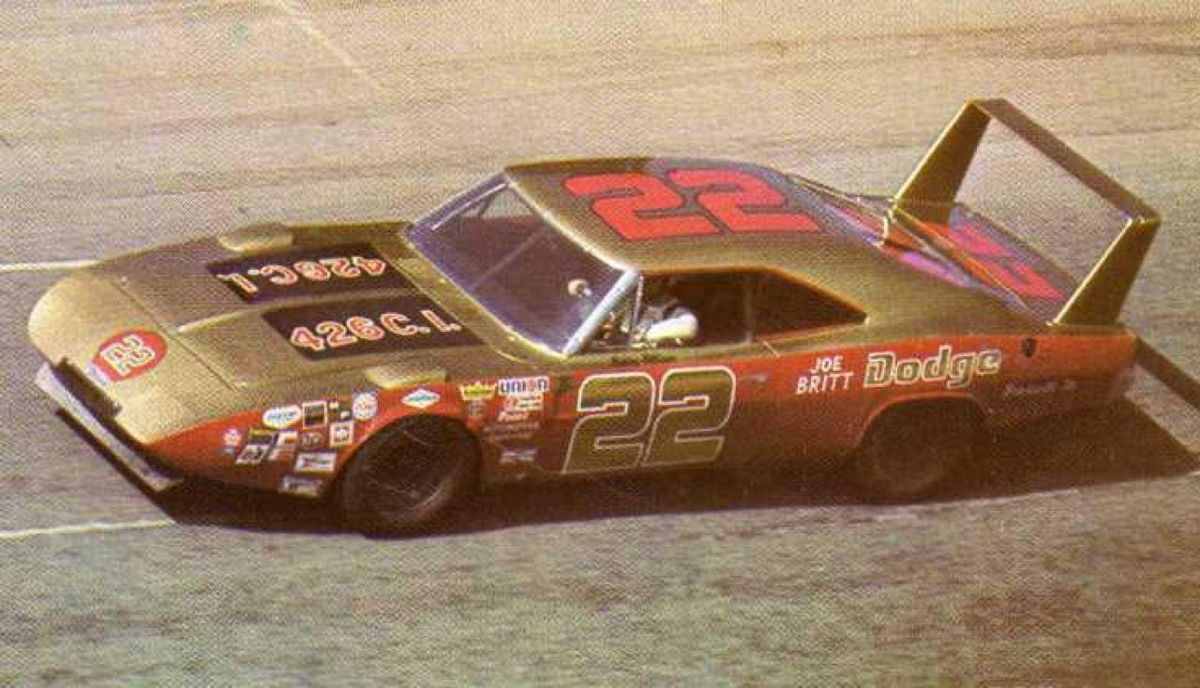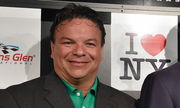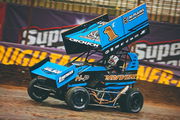

NASCAR, known for its iconic American stock cars, has had its fair share of surprising and out-of-place vehicles that have graced the racing scene. From failed automotive ventures to European imports, these cars have left their mark on the sport in the most unexpected ways.
Watch What’s Trending Now!
Let us delve into the world of NASCAR’s most outrageous and weird cars, exploring their unique features and the flaws that made them stand out from the crowd.
ADVERTISEMENT
1958 Edsel:
The Ford Edsel, touted as a futuristic car for its time, faced a dismal fate in the automotive industry. Despite its radical styling, the Edsel struggled with poor sales and ultimately became one of the biggest flops in history and almost resulting in a loss of $2 Billion Dollars. In NASCAR, the Edsel made appearances in races such as the Daytona 500, where it faced challenges due to engine issues and a notorious fuel filter mishap that resulted in an engine fire. The last driver to drive the Edsel was Mike Saathoff in 1961; he finished 19th.
1958 Edsel Corsair pic.twitter.com/d5Kv0kGLLq
— Car Man (@CarMan201169) April 14, 2021
ADVERTISEMENT
Jaguar XK120:
During the early 1950s, NASCAR introduced the International 200, pitting American cars against European counterparts. The Jaguar XK known for their sleek design and performance, made a noteworthy appearance like the 100 Mile Stock Race won by Paul Goldsmith. While they showcased their capabilities on the track, a lack of sustained success prevented their long-term participation in NASCAR races.
The #1950s #Flajole Forerunner based on a #Jaguar XK120. Bill Flajole also designed the #Nash Metropolitan. pic.twitter.com/AyAWwOO9ps
— Quirky Rides (@QuirkyRides) May 7, 2023
ADVERTISEMENT
Top Stories
Greg Biffle’s $4M Worth Prized Possession Still Without a Buyer Leaves NASCAR Fans Heartbroken

Denny Hamlin Offers First Words Since Losing Beloved Father in Anniversary Fire

Fox Broadcaster Pens Heartfelt Message as Veteran Announcer Quits NASCAR

NASCAR World Mourns as Former Watkins Glen President Michael Printup Passes Away at 60

“This Is Not Racing”: Growing Outrage Erupts Over How Kids Are Being Taught to Win at Any Cost in Modern Motorsports

Austin Healey:
The Austin Healey, a British sports car, found its way into NASCAR’s International 200, providing a distinctive touch to the races. However, the Healey’s struggled to adapt to the demanding oval tracks, resulting in subpar performances and limited success. Besides that, Healey was made fun of for having “Bug Like” headlights, which made Healey a laughingstock. The best finish for Healey was by Doc Lee finishing 15th in place.
Terry's 1960 Austin-Healey Bugeye Sprite "Wade" – Autoshrine Registry https://t.co/aqOZxTdRqX pic.twitter.com/j8xyG8nV82
— AutoShrine Network (@AutoShrine) July 9, 2023
ADVERTISEMENT
MG 1954:
The MG, characterized by its distinctive fenders, made its presence felt in NASCAR, albeit with mixed results. From the five MGs that participated in the 1954 International race at Linden Airport to subsequent races at Bowman Gray Stadium, these British cars faced challenges, with mechanical issues, overheating problems and performance limitations hindering their results.
MG TF. 1954 #classiccars pic.twitter.com/tIXxv2R09j
— Gianfelice (@Felix38491270) December 11, 2019
ADVERTISEMENT
Alfa Romeo:
With the introduction of the Grand Touring series in the late 1960s, NASCAR allowed smaller European cars like the Alfa Romeo to compete. While the Alfa Romeo GTA excelled in rally competition, its transition to oval tracks proved challenging. The Alfa Romeo struggled to match the horsepower advantage of American cars, resulting in less-than-stellar performances and limited success.
Alfa Romeo Giulia 1962, Giulia GT 1963, Giulia GTA 1965. Komentarz jest chyba zbędny😎 📷https://t.co/oYYnB8BTEF #AlfaRomeo110th pic.twitter.com/FFmIUEzjRD
— Roy Given 🇵🇱 (@Roy_Given) June 24, 2020
ADVERTISEMENT
Porsche 911:
In a surprising turn of events, NASCAR races once featured the Porsche 911, a renowned sports car. Renowned road racer Peter Gregg and Volkswagen dealer Jack Ryan pushed the limits of these iconic vehicles on tracks like Darlington and Rockingham. Despite their agility and road-course prowess, the Porsche 911s faced significant challenges on oval tracks, impacting their overall performance.
ADVERTISEMENT
Now live at BaT Auctions: 1966 Porsche 911 Coupe 5-Speed. https://t.co/7Tq6yeLeMU pic.twitter.com/AHhCHohSvB
— Bring a Trailer (@Bringatrailer) April 13, 2023
Citroen ID 19:
The Citroen ID 19, known for its fuel efficiency, surprised everyone by excelling in NASCAR’s first race at Riverside in 1958. With its ability to make fewer pit stops due to excellent mileage, the Citroen ID 19 finished first and second in its class. However, the car’s limited power and performance capabilities on high-speed ovals prevented further success in NASCAR.
ADVERTISEMENT
Citroen ID 19 pic.twitter.com/dQs7xTCK2z
— Jacque (@Jacquekourouss) November 6, 2018
Tucker 1950:
The Tucker, an innovative rear-engine car with three headlights, stirred up excitement in the late 1940s. However, due to a combination of challenges, including financial difficulties and accusations of stock fraud, the Tucker’s production was short-lived. In NASCAR, the Tucker made a brief appearance in 1950, driven by Joe Merola. Unfortunately, mechanical issues caused an early exit from the race, limiting its impact on the sport.
76 years ago today (7 July 1947) the Tucker 48 was shown in an exclusive preview at the Hotel Statler in Washington DC.https://t.co/B9tuRS5Fzo#cars #autos #throwback #OnThisDay #classiccars #365daysofmotoring pic.twitter.com/9wkQulVSQ9
— 365 Days of Motoring (@365daysmotoring) July 7, 2023
Mini Cooper:
In 1968, a surprising contender joined the NASCAR ranks: the 1967 Austin Mini Cooper. This compact British car took to the dirt tracks of Richmond Speedway, defying expectations. While it showcased its agility and maneuverability, the Mini Cooper’s lack of raw power limited its ability to compete with the dominant American muscle cars on larger tracks.
Ad – 1968 Austin Mini Cooper Mark Ii
Full Spec On eBay 👉 https://t.co/my3ffuqLBt pic.twitter.com/oORhiEThsP— Car Man (@CarMan201169) April 9, 2021
Volkswagen Beetle:
Perhaps the most unexpected entrant in NASCAR’s history, the Volkswagen Beetle made its mark in the sport. From its participation in the International 200 in 1953 to the modified Beetles that raced at Martinsville in the 1980s, these iconic compact cars brought a touch of whimsy to NASCAR. However, due to their limited horsepower and unconventional design, their performance was often overshadowed by their larger, more powerful competitors.
Today in 2019 the last Volkswagen Beetle rolls off the line in Puebla, Mexico. The last of 5,961 "Special Edition" cars will be exhibited in a museum pic.twitter.com/pH6F4R6pGg
— the painter flynn (@thepainterflynn) July 10, 2023
NASCAR’s history is not solely filled with American muscle cars but also includes a lineup of truly outrageous and unexpected vehicles. From the ill-fated Edsel to European imports like the Jaguar, Alfa Romeo, and Porsche, each car brought its unique charm and flaws to the racing scene. Despite their challenges, these cars added diversity and intrigue to NASCAR, proving that even the most unconventional entries can leave a lasting impression on the sport.
WATCH THIS STORY: “They Got It Half the Way Right” – Kyle Larson Discusses the Big Pile-up in Chicago and How NASCAR Can Avoid It in the Future
ADVERTISEMENT
ADVERTISEMENT
ADVERTISEMENT

